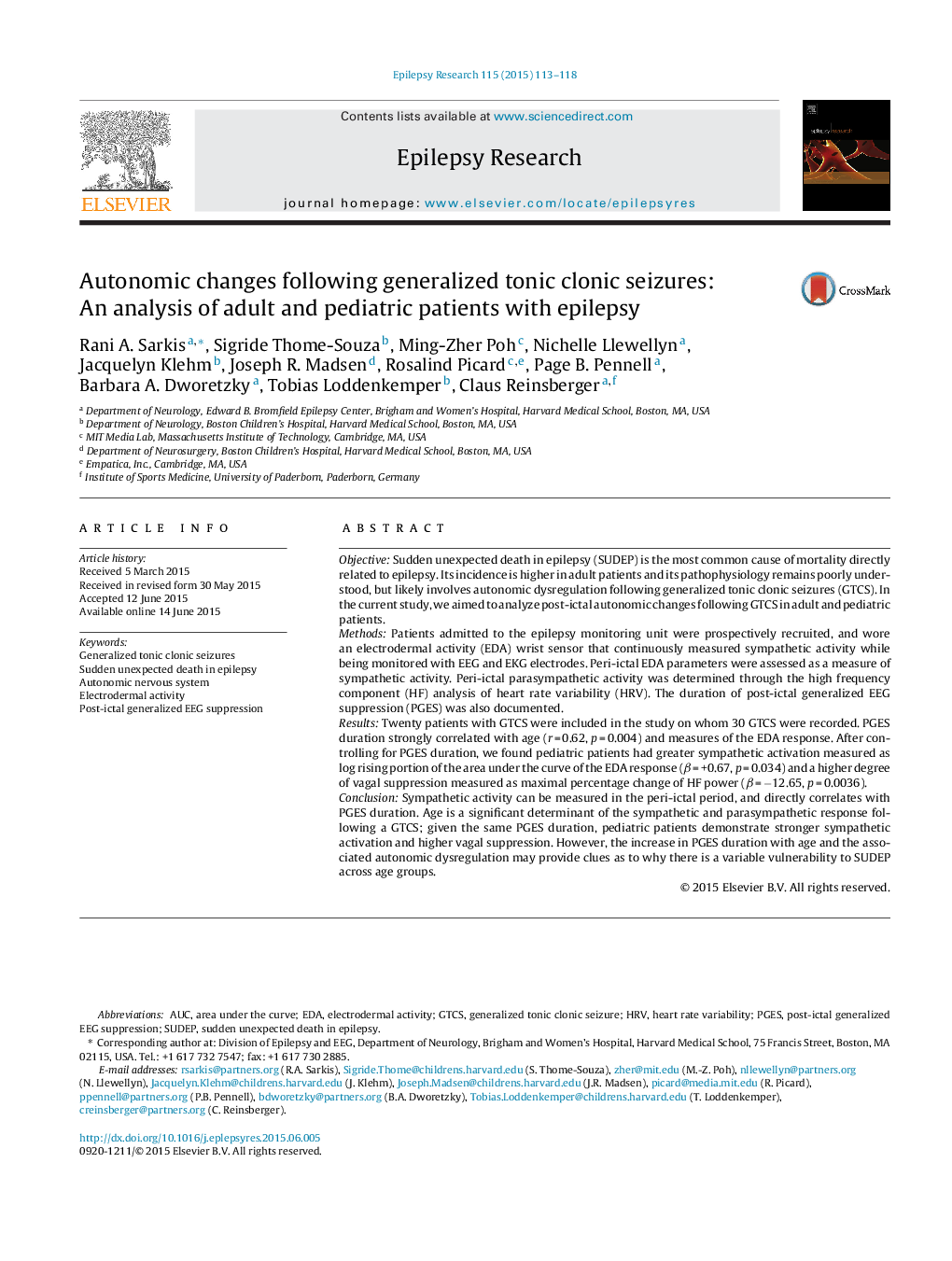| کد مقاله | کد نشریه | سال انتشار | مقاله انگلیسی | نسخه تمام متن |
|---|---|---|---|---|
| 6015278 | 1579908 | 2015 | 6 صفحه PDF | دانلود رایگان |
- Autonomic changes following a GTC were measured using a wrist-worn sensor.
- Adult patients had longer durations of post-ictal generalized EEG suppression.
- The duration of post-itcal suppression correlated with the degree of sympathetic activation.
- Post-ictal sympathetic and parasympathetic markers differed depending on age.
ObjectiveSudden unexpected death in epilepsy (SUDEP) is the most common cause of mortality directly related to epilepsy. Its incidence is higher in adult patients and its pathophysiology remains poorly understood, but likely involves autonomic dysregulation following generalized tonic clonic seizures (GTCS). In the current study, we aimed to analyze post-ictal autonomic changes following GTCS in adult and pediatric patients.MethodsPatients admitted to the epilepsy monitoring unit were prospectively recruited, and wore an electrodermal activity (EDA) wrist sensor that continuously measured sympathetic activity while being monitored with EEG and EKG electrodes. Peri-ictal EDA parameters were assessed as a measure of sympathetic activity. Peri-ictal parasympathetic activity was determined through the high frequency component (HF) analysis of heart rate variability (HRV). The duration of post-ictal generalized EEG suppression (PGES) was also documented.ResultsTwenty patients with GTCS were included in the study on whom 30 GTCS were recorded. PGES duration strongly correlated with age (r = 0.62, p = 0.004) and measures of the EDA response. After controlling for PGES duration, we found pediatric patients had greater sympathetic activation measured as log rising portion of the area under the curve of the EDA response (β = +0.67, p = 0.034) and a higher degree of vagal suppression measured as maximal percentage change of HF power (β = â12.65, p = 0.0036).ConclusionSympathetic activity can be measured in the peri-ictal period, and directly correlates with PGES duration. Age is a significant determinant of the sympathetic and parasympathetic response following a GTCS; given the same PGES duration, pediatric patients demonstrate stronger sympathetic activation and higher vagal suppression. However, the increase in PGES duration with age and the associated autonomic dysregulation may provide clues as to why there is a variable vulnerability to SUDEP across age groups.
Journal: Epilepsy Research - Volume 115, September 2015, Pages 113-118
